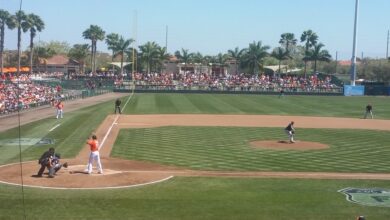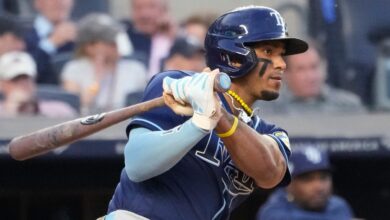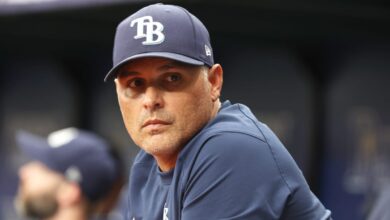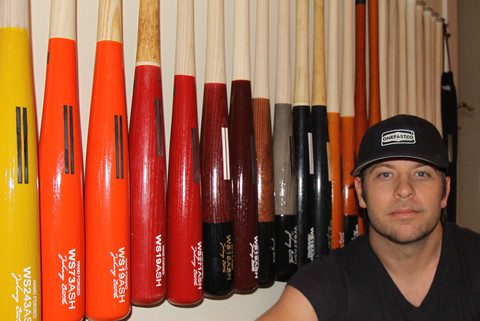
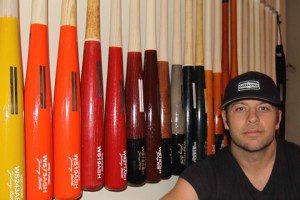
A bat to a player in the great game of baseball is more than a piece of wood. To some, it’s a trusted ally, a sidekick. To others, it’s the difference between settling in on a hot streak and being the dog of a slump.
Picking out a bat isn’t an easy task. The weight has to be just so, the look has to be appealing and, most of all, it has to feel right. There is nothing quite like the intricacy of a 15-pitch at-bat where the pitcher-batter duel goes on, igniting fans with excitement over how long it will last and who will come out on top. When we see a professional player take a spot in the batter’s box, most are unaware of what it took to pick that particular bat. Most are unaware that this player picked this bat as if it was his last. If it breaks, sure, there are always more, but a lot of faith is put into a chosen bat.
Founder of Warstic Bats and former MLB player Ben Jenkins believes picking the right bat is based on superstition.
“Baseball is such a feel sport,” he said. “Everything has to be perfect — just so.”
Jenkins grew up playing the game. He attended Mississippi State University and was later signed as a free agent to the Philadelphia Phillies in the mid-’90s. At the time, the bats he and other players used were custom Louisville Sluggers.
“I still have the first Louisville Slugger I used on my wall,” Jenkins said.
Picking a bat can difficult for a player. It’s more about the feel when they grip it. It has to look a certain way, and when they take a cut, it has to slice the air with a certain smoothness.
“Baseball players are as superstitious as they come,” Jenkins claims. “Guys write their numbers on the bottom of the handle; some have to put the pine tar just so. It’s a very OCD type of thing.”
Baseball superstitions are no secret. Certain rituals and beliefs that have been notorious in the way they affect a player’s performance at the plate or in the field. For instance, R.A. Dickey names each bat he hits with, and Wade Boggs was as superstitious as they come. Every time he’d come to the plate, he would write the Hebrew word “chai,” which means “life” in the batters box. Moises Alou would urinate on his hands before each game, so he could bat without batting gloves. He believed this helped prevent calluses from hitting without them.
Today, there is one all-around shape to a bat. After experimenting with various styles, by 1879 it was said that the long and slender is the common style of bats. In addition, the handle had a carved knob for better control. Its thickness is no more than 2.75 inches in diameter and no more than 42 inches long. It weighs no more than 33 ounces, but varies player to player.
The Official Major League Baseball rules regarding bats states:
Rule 1.10
(a) The bat shall be a smooth, round stick not more than 2-3/4 inches in diameter at the thickest part and not more than 42 inches in length. The bat shall be one piece of solid wood. NOTE: No laminated or experimental bats shall be used in a professional game (either championship season or exhibition games) until the manufacturer has secured approval from the Rules Committee of his design and methods of manufacture. (b) Cupped Bats. An indentation in the end of the bat up to one inch in depth is permitted and may be no wider than two inches and no less than one inch in diameter. The indentation must be curved with no foreign substance added. (c) The bat handle, for not more than 18 inches from its end, may be covered or treated with any material or substance to improve the grip. Any such material or substance, which extends past the 18-inch limitation, shall cause the bat to be removed from the game. NOTE: If the umpire discovers that the bat does not conform to (c) above until a time during or after which the bat has been used in play, it shall not be grounds for declaring the batter out, or ejected from the game. (d) No colored bat may be used in a professional game unless approved by the Rules Committee.
On a side note, MLB also does not permit bat handles to be less than 16/19 of an-inch in diameter. But, of course, there have been exceptions throughout league history. The longest bat in MLB history was that of Hall of Famer Al Simmons, who used a 38” inch bat. The heaviest bat, 48 ounces, was used by Edd Rousch of the Cincinnati Reds. The shortest bat ever used for regular play was a 30.5 inches by “Wee” Willie Keeler, and he used it his entire career (1892-1910).
In 1884 during a Professional American Association game, Louisville Eclipse star Pete Browning broke his favorite bat; a fitting end to his current slump. John Hillerich was in attendance that particular day and invited Browning back to the woodworking shop of his father, J.F. Hillerich. Hillerich and Browning selected a piece of white ash and went to work. With Browning’s directions, Hillerich shaped the new bat. Throughout the night, Browning watched over his shoulder and occasionally took practice swings with the prototype until the bat was just right.
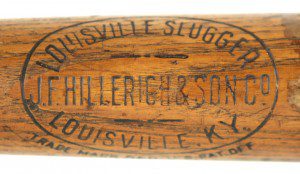
The next day, Browning used the bat and went 3-for-3, ending his slump. Not long after, Hillerich and his father began taking orders from Browning’s teammates to create more Hillerich specials. From that point forward, “Louisville Slugger” was in business and has been ever since. Today, 60 percent of all major league players use this brand.
Jenkins believes you can’t sell a player a bat but you can sell a story, like Louisville Slugger; it’s the brand more than the actual bat that determines the sale.
Jenkins would eventually succumb to injuries that cut his pro career short. He would later start his own team of ex-college guys and ex-pros in some wood-bat leagues, but while playing, he always studied design and art. Mixing his love for baseball and art, Jenkins formed Warstic Bat Company in 2011. His goal was to make quality bats and steer away from gimmicky products and campaigns. He believes bat design can change the way a player feels about it. This is what he incorporates with his brand.
“The only two things I have ever done for a living are baseball and design. Warstic Bat Company is about bringing those two loves together.” Jenkins said. “I wanted to design a bat that gives the player a mental toughness in battle against the pitcher.”
Unlike Louisville Slugger and Rawlings, which use player endorsements to help sell their products, Ben isn’t starstruck at all. To get even one of his bats in the league is hard enough.
“The MLB makes it hard to have a bat in the league,” Ben said. “You need a $10 million insurance policy.”
The amateur market continues to expand, and with help from social media outlets that help reduce marketing costs, bat companies like Warstic can survive. However, an advantage bigger companies have is a lower-cost access to lumber. Today, 50 percent of Major League Baseball bats are made out of ash and the other half are made from maple. There isn’t an endless supply of good wood, so companies like Louisville Slugger, Easton, Rawlings and Mattingly own their own land and harvest their own timber to supply their factories with the best wood possible. Enough land in fact that has to supply thousands of teams each year. For instance, Louisville Slugger has to use 40,000 trees for one MLB season’s worth of their bats.
To Jenkins, owning a bat company is more about his passion and having fun with it. He’s not worried about the market or his competitors. He has no sales people or an advertising department; word of mouth and social media are what guide him. His 10-year goal is to sell the most bats without spending the big bucks. To date, his company is top-10 in online bat sales.
Now that the steroid era is behind us, hitting a baseball is not about PEDs, it’s about getting good wood on the ball. And one thing will never change in the next 10-20 years: A bat is just as important as the way you hit with it.
Post sponsored by The Sports Geek on YouTube


